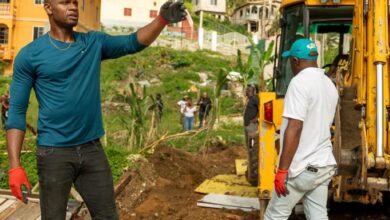Breaking gender barriers: 5 Latin dance groups you should know
From vogue to merengue, here you can find 5 Latino groups that break traditional gender categories with their dance

The LGBTIQ community has broken conservative paradigms in many areas and what is known as gender, nowadays, is nothing more than a ghostly spectrum that constructs and deconstructs what we are. This transformation that breaks with the traditional gender categories has been called queer. The multiple expressions of queer can fully collect the community and their struggles, because they fully conceptualize what it is to be LGBTIQ. One of those expressions is dance and in Latin America different groups honor this. Here you can find some of them.
Leer en español: 5 grupos de baile latinos que rompen las barreras de género
Las Marshall. Gay milonga (Argentina)
The couple dances have always been heteronormative. However, La Marshall is a cultural space from Buenos Aires that breaks those ideas while teaching to dance tango. Here, men and women dance with people of the same gender, or as they want. The truth is that binary limits do not exist in this place. In fact, the norms and traditional codes do not fit in "the queer tango".
Gender roles intervene in the transforming game of dance, because the one who dominates dance is not always the man. With more than 15 years, La Marshall has internationalized to the point that, since 2007, it is one of the organizers of the Tango Queer International Festival of Buenos Aires, which this year will take place from November 12 to 18.
Mexico de Colores. Dance, inclusion and tolerance (Mexico)
Created in 2011 by the artist Carlos Antúnez, México de Colores proposes an expression of scenic multiplicities. This group mixes Mexican folklore, pantomime, cabaret, comedy, music and dance. Its members, all men, represent with the use of Mexican costumes and dances the stories and experiences of the LGBTIQ community in the country.
Its varied and brilliant staging has brought to Mexico de Colores a wave of popularity that has allowed them to travel across the country, jumping from function to function. Acclaimed not only by the LGBTIQ public, it has become an emblematic group that acts in favor of sexual diversity and the vindication of the rights of this community.
About 30 men make up Mexico de Colores, a group in which what matters least is the concept of macho.
You can also read: Latin America has always danced: Which of your favorite dances have been around for centuries?
House of Tupamaras. Vogue femme, drag and merengue (Colombia)
The urban, decadent, nocturnal and subterranean nature of New York vogue has moved to Bogotá in the skin of House of Tupamaras. This is a group of queer dancers who, with their daring and distant dance of the normative, open the doors to freedom, to the fluidity of the gender and to the daring perspectives of sexuality.
Consisting of around 15 people, this dance group also embodies the ball culture, which in the 80s and 90s brought together the segregated communities of the metropolis in hidden feasts of vanity and lust. Merengue is an addition that exalts its authenticity, so they describe themselves as merengue divas that mix vogue and drag with the tasty rhythms that this music offers.
The Tupamaras, baptized in honor of both the Uruguayan guerrilla Tupamaros and the merengue orchestra that bears the same name, were presented in the latest version of Rock al Parque along with the popular group Pussy Riot.
The Tranxgressors. Cumbia, sensuality and disco (Peru)
In Lima there are the girls Tranxgresoras of the cumbia, a group of transgender women who dance in discos the tunes of popular music and fashion in Peru. The group, created in 2012, was presented at the XVIII National LGBTIQ Pride March, opening its possibilities to be seen by more people in the community.
However, due to their aesthetic qualities, their stunning beauty and their sensual cumbrous bodies, these women have managed to transgress the conception of the feminine and act for any kind of audience.
It may interest you: The soundtrack of the Venezuelan Diaspora
The Galán Family. Folklore, family and tradition (Bolivia)
Since 2002, the Galán Family has been presented uninterruptedly in the Carnival of Oruro, in Bolivia, named by UNESCO as "Masterpiece of the Oral and Intangible Heritage of Humanity". This group, known for its outlandishness and extravagance, dances in the parades to the rhythm of the kullawada, wearing costumes in a transvestite version of the waphuri, a leading man who guides the parade.
Until 1975, in the central parade, women were forbidden to dance, so, as a tradition, men dressed as women and paraded in their name. The Galán Family has rescued this custom and raised it with the graces of the art of transformism, flaunting glitter, carnival costumes of high fashion and rhythm in the dance.
LatinAmerican Post | Jorge Becerra
Translated from "5 agrupaciones de baile latinas que rompen las barreras de género"





